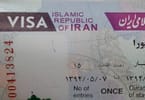Dionisio D’Aguilar, Chairman of the Council of Ministers of the Caribbean Tourism Organization, presented the following remarks at World Travel Market Caribbean News Conference on Monday, 6 November, 2017, at the North Gallery room NG5 in Excel:
The Tale of Two Cities by Charles Dickens has been quoted so much over the years that it has become somewhat of a cliché.
However, in the present context, it is a most appropriate cliché for our circumstances as the Caribbean has witnessed the proverbial tale of two cities during the past ten months or so.
We had the best of times, with record performances in the first half of 2017, and for some of our member countries, and by extension the region, the worst of times with the passage of hurricanes Irma and Maria.
We began the year growing at a healthy pace of 5.2 percent between January and June, when compared to the same period last year.
This was ahead of the growth rate of 2.5 percent to 3.5 percent which had been our forecast and was a reflection of economic stability in the market, expansion and inauguration of flights by major carriers and new marketing and product development initiatives.
During this period the region recorded 16.6 million international tourist arrivals, some 800 thousand more than in the first six months of 2016.
Growth was recorded in all major source markets except South America, which contracted by 14.3 percent.
Up to June, the European market had grown by 7.9 percent, Canada by 6.4 percent, and despite the weak sterling, the UK grew by 4.8 percent.
In the hotel industry, the half-year outcomes reported by STR Global showed that average occupancy increased marginally by 0.2 percentage points to 70.8 percent, while the average daily room rate rose slightly by 0.2 percent, moving from US$220.84 in 2016 to US$221.38 in 2017.
Growth in the cruise sector also remained positive and stronger than the expected performance in the first half of the year. At the end of the first six months of 2017, cruise passenger arrivals to the Caribbean region had reached an estimated 15.3 million, up four per cent over the corresponding period of 2016. This performance represented the largest number of cruise passengers in the region at this time of year.
Then came the hurricanes – first, Irma, then Maria – that inflicted such damage on some of our member countries, causing such despair!
There has been widespread coverage of the damage caused to these countries and territories, the most serious among them being Anguilla, Barbuda, the British Virgin Islands, Dominica, Puerto Rico, both Dutch and French Saint Martin and the US Virgin Islands.
Understandably, this triggered a slowdown, with travel to many of these destinations having been severely impacted.
Consequently, we have revised our forecast for 2017 to between one and two per cent, with a similar growth rate projected for next year.
This is expected to have a significant economic impact, based on predictions by the Caribbean Development Bank; according to the CDB every one per cent reduction in tourist arrivals could cost US$137 million in lost revenue.
Our revised forecast is based on a number of factors, including figures provided by CTO’s partner, OAG, the air travel data provider based here in the UK.
Data based on schedules that were provided to OAG by the airlines showed that in October the number of flights to the region fell by 6.7 per cent, while seat capacity contracted by 4.1 percent.
Among the worst hit destinations, the frequency of flights to Puerto Rico decreased by 25.1 percent, Dominica by 13.7 percent, St. Maarten by 12 percent, the British Virgin Islands by 11.2 percent, Anguilla by 6.3 percent and the US Virgin Islands by 5.6 percent.
Seat capacity to all of these destinations was consequently adversely affected with St. Maarten experiencing a near 50 per cent falloff.
Some of these reductions were influenced by Hurricane Harvey, which hit the US mainland, but most were a direct result of Irma and Maria.
It must be noted, however, that Cuba’s capacity grew by 10 percent despite changes to the schedule. The new services from the US are a major influence on this performance.
The largest of the carriers based in the region, Caribbean Airlines and LIAT, both registered declines in capacity, with LIAT falling by 21.3 percent and Caribbean Airlines by 9.5 percent.
However, overall, air capacity in the region grew by five percent for the first nine months of 2017 when compared to the same period last year.
As for post-hurricane tourist arrivals, it is still too early to tell, since the October numbers are not yet in. However, with several of the key cruise destinations, including Puerto Rico, St. Maarten and the US Virgin Islands recovering from the impact of the hurricanes, cruise lines made changes to their itineraries to include alternative regional ports which remained open.
These redeployments have benefited countries such as Curacao, which registered a 138.3 percent rise in cruise passenger arrivals in September, Jamaica (54.1 percent), the Cayman Islands and Grenada.
You would have noticed that we predict growth in tourist arrivals this year, albeit slower than expected, which could still mean new record performance for the Caribbean despite the storms.
This is mainly due to the fact that some 75 percent of the Caribbean was unscathed by the hurricanes and continued to welcome visitors.
And, if we are to return to Dickens, there is prodigious strength in sorrow and despair, as a brilliant people rise from this destruction and devastation, with the fighting spirit of the people of the Caribbean, ready to rebuild stronger and more sustainably than before.
Already, virtually all of the affected countries are reporting that they are open again for business, although not at full capacity, with every one of them planning some sort of event either later this year or early next year.
A separate document will be presented to you outlining the state of readiness of these countries.
Thank you all for coming and for helping spread the word that the Caribbean is open for business, and for reminding everyone that the best way to help the Caribbean is to travel to the Caribbean.
WHAT TO TAKE AWAY FROM THIS ARTICLE:
- We had the best of times, with record performances in the first half of 2017, and for some of our member countries, and by extension the region, the worst of times with the passage of hurricanes Irma and Maria.
- However, in the present context, it is a most appropriate cliché for our circumstances as the Caribbean has witnessed the proverbial tale of two cities during the past ten months or so.
- Data based on schedules that were provided to OAG by the airlines showed that in October the number of flights to the region fell by 6.






















